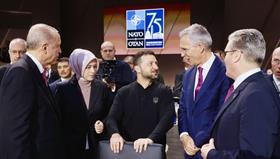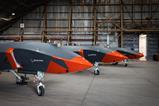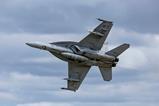Ukraine is seeking formal permission to use donated Lockheed Martin F-16 fighter jets to strike targets inside Russia.
Joining fellow national leaders at NATO’s annual summit on 11 July, Ukrainian President Volodymyr Zelensky said his country’s armed forces need the ability to strike military targets located within Russian territory.
“If we want to win, if we want to prevail… we need to lift all the limitations,” Zelensky said from Washington DC.
Key suppliers of military hardware to Ukraine, including the UK, Germany and the USA, have recently eased previous restrictions on how and where their equipment can be used. The policy change was prompted by a Russian offensive toward the Ukrainian border city of Kharkiv, which was supported by Russian aircraft and artillery forces located just across the nearby frontier.

While prohibitions have been relaxed on using Western-supplied long-range munitions to hit targets inside Russia, a major unknown remains how donated fighter aircraft will be approved for use.
The first tranche of F-16 fighters provided by NATO members are now actively being delivered to Ukraine, which has been seeking modern combat aircraft for more than a year. National leaders from the USA, Denmark and the Netherlands confirmed the milestone on 10 July.
Those fighters are expected to begin combat sorties before the end of the summer.
“First and foremost, the priority is self-defence and air defence,” Dutch defence minister Ruben Brekelmans said from Washington on 10 June. The Netherlands is currently the largest individual supplier of fighters to Ukraine, with a stated commitment of 42 F-16As from its fleet.

However, Brekelmans also left open the possibility that the jets could be eventually used to support expanded combat operations, including “offensive manoeuvres” and close air support to ground troops, as the Ukrainian air force’s capacity is built out.
Appearing alongside Zelensky, NATO secretary general Jens Stoltenberg affirmed his view that Ukraine has a right to use Western-supplied weapons to hit back at military forces inside Russia, which have been lobbing cruise missiles and glide bombs into Ukrainian cities for over two years.
“The right of self-defence includes also the right to strike legitimate military targets on the territory of the aggressor,” Stoltenberg says. “There is no doubt Ukraine has the right to use the weapons they have received… to hit legitimate targets on Russian territory.”
As an example, Zelensky cited a children’s hospital in Kyiv that was severely damaged during a Russian missile barrage on 8 July. At least 36 people across Ukraine were killed in the attack, with another 140 or more injured, according to the Ukrainian government.
Moscow denies targeting the hospital, claiming instead the facility was damaged by debris from a Ukrainian air defence missile.
Zelensky says he has raised the issue of expanding strikes against targets inside Russia with key NATO members, including the US president and UK prime minister. He described receiving a “very good message” from the new resident of Number 10 Downing Street, Sir Keir Starmer of the Labour Party.
National leaders from all 32 alliance members, alongside Zelensky and Stoltenberg, convened on the afternoon of 11 July in Washington for a meeting of the NATO Ukraine Council, where the Ukrainian president said the issue of F-16s and striking Russian targets would be discussed.
“We are counting on strong decisions here,” Zelensky said before the meeting.
Some 97 F-16s have been pledged to Ukraine by the Belgium, Denmark, the Netherlands and Norway. France has also offered Kyiv its remaining fleet of Dassault Mirage 2000-5 fighters, of which 26 are in service, according to Cirium.
This is a developing story and will be updated as new information becomes available































